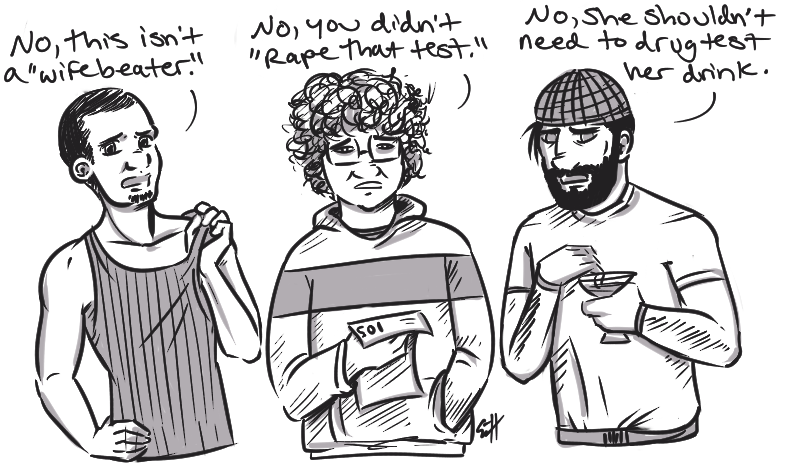
Erin Holloway, senior in English
Trigger warning: date rape drugs, rape, sexual assault, victim blaming
NC State has been making international headlines thanks to four students who developed a nail polish that would (theoretically) help women detect date rape drugs in their drinks.
Supposedly, the nail polish would change color should anyone wearing it stir a drink laced with date rape drugs such as Rohypnol, Xanax and Gamma-Hydroxybutyric Acid.
With all the press comes a reasonable amount of backlash and resistance to the product and its publicity. In fact, many of my feminist friends have pointed out that the polish could be a huge contributor to victim blaming.
For instance, take the example of a hypothetical woman who has been drugged and raped. In addition to asking what sort of clothes she was wearing, prosecutors can now ask why she wasn’t wearing the nail polish when she went out to a club.
Additionally, most women I’ve talked to about this point out that the polish does not address the fact that the perpetrators rape, only that women get the consequence.
Of the many headlines this story has reached, one that caught my attention most came from The Washington Post, “What was fake on the Internet this week: Date-rape nail polish, ‘two moons’ and the return of ‘Breaking Bad.’” It said that evidently laboratory tests have shown the polish doesn’t even detect the drugs it supposedly detects—only irrelevant other chemicals. Further, the drugs it should detect are not even the most common among date rape drugs.
When we frame this within the context of knowing how few rapes are actually perpetuated by strangers—that most resoundingly often, victims know their attackers—what this nail polish boils down to is uselessness.
Seeing as how the four developers; Ankesh Madan, Stephen Gray, Tyler Confrey-Maloney and Tasso von Windheim; hadn’t even released the product and likely did not anticipate this caliber of press, it’s possible the nail polish is a long way from leaving the prototype phase—meaning a lot of trial-and-error tests. Although the polish is useless as it is now, it has potential for effectiveness.
Still, it’s not enough in the grand scheme of things. It is great to see men addressing the issue of sexual violence. It’s about time we tried to catch up with the women who have long fought against these crimes. But giving women more tools to try to defend themselves is not the way to go about it; as I mentioned earlier: Tools of defense can quickly be warped into tools for victim blaming.
Don’t get me wrong; this is nothing against the developers. In fact, I am happy they made efforts they thought would stop sexual assault.
But we can do so much more to prevent sexual assault and rape.
For one, we have to teach men not to rape. Usually, when people say this, others react with an analogical question: Why don’t we teach people not to rob instead of teaching people to lock their doors?
It’s a fine analogy, but we do actually teach people not to rob. The court systems work in such a way that burglars get prosecuted. There is no victim blaming in cases of robbery. People understand that, should they rob someone, there will likely be undesirable consequences. On the other hand, rapists and sexual assailants very commonly get off without so much as a slap on the hand.
For evidence of this, look at the many football players who only had to sit out two or so games after being accused (with ample evidence) of violently raping a fellow student.
The lack of consequences for rapists not only fails to teach men not to rape or attack women, it teaches men that they can usually get away with the crimes.
By holding our legal and justice systems—and, by proxy, the perpetrators—accountable, we can take real strides toward teaching men not to rape.
Other actions we can take include calling out our male friends who speak violently of women or use rape as a casual term synonymous with “overpowered.” Those who speak this way will most often be the ones who blame victims of sexual assault; they are the ones who sympathize with rapists.
If we men want to help put an end to sexual violence, we must address the actual problem: Men rape women. No nail polish in the world is going to change that.